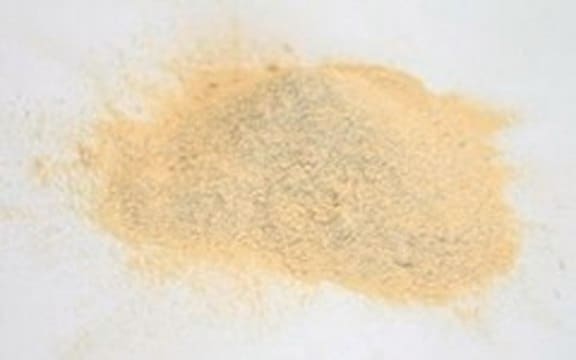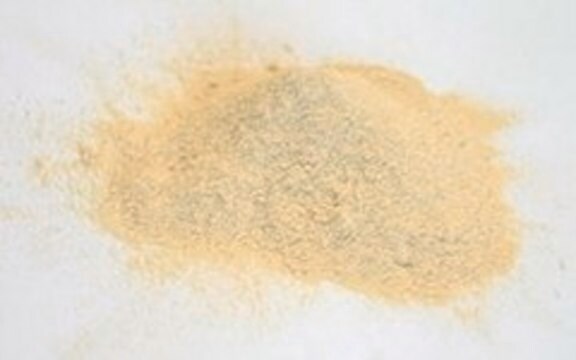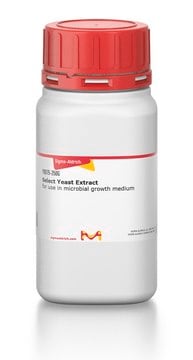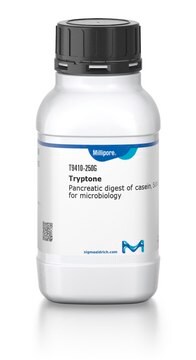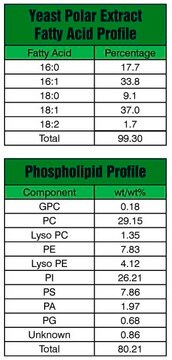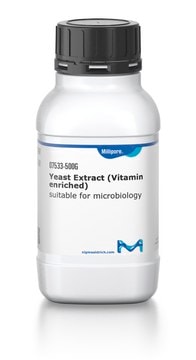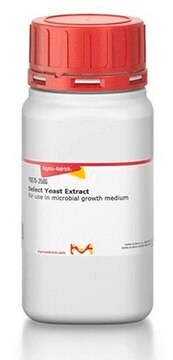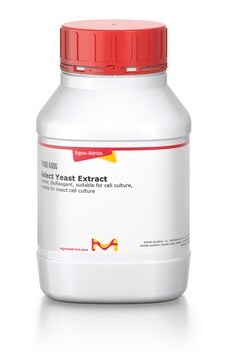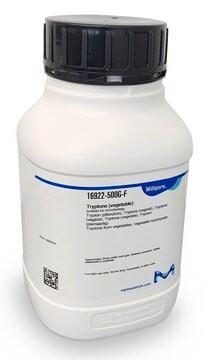Recommended Products
biological source
Saccharomyces cerevisiae
Quality Level
sterility
non-sterile
form
powder
shelf life
limited shelf life, expiry date on the label
composition
amino-N, ≥4.5%
nitrogen content, ≥9%
ign. residue
≤15%
loss
≤8.0% loss on drying
pH
5.8-6.8 (25 °C, 2% in H2O)
application(s)
food and beverages
microbiology
suitability
molds
yeasts
Looking for similar products? Visit Product Comparison Guide
Application
This yeast extract was produced in micro-agglomerated form to be easier for weight-in by better flow properties of the powder and less dust building.
Analysis Note
solubility:2% in water: clear, light yellow and light brown-yellow and light brown
Storage Class Code
11 - Combustible Solids
WGK
WGK 1
Flash Point(F)
Not applicable
Flash Point(C)
Not applicable
Choose from one of the most recent versions:
Already Own This Product?
Find documentation for the products that you have recently purchased in the Document Library.
Customers Also Viewed
Sara Hooshangi et al.
PLoS computational biology, 7(9), e1002172-e1002172 (2011-10-08)
Quorum sensing (QS) enables bacterial multicellularity and selective advantage for communicating populations. While genetic "switching" phenomena are a common feature, their mechanistic underpinnings have remained elusive. The interplay between circuit components and their regulation are intertwined and embedded. Observable phenotypes
Samriddha Ray et al.
The Journal of cell biology, 190(5), 793-805 (2010-09-02)
The mechanisms that regulate cytoskeletal remodeling during the transition between mitosis and interphase are poorly understood. In fission yeast the MOR pathway promotes actin polarization to cell tips in interphase, whereas the SIN signaling pathway drives actomyosin ring assembly and
Our team of scientists has experience in all areas of research including Life Science, Material Science, Chemical Synthesis, Chromatography, Analytical and many others.
Contact Technical Service
